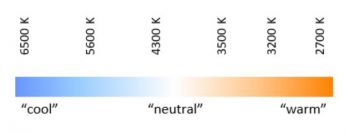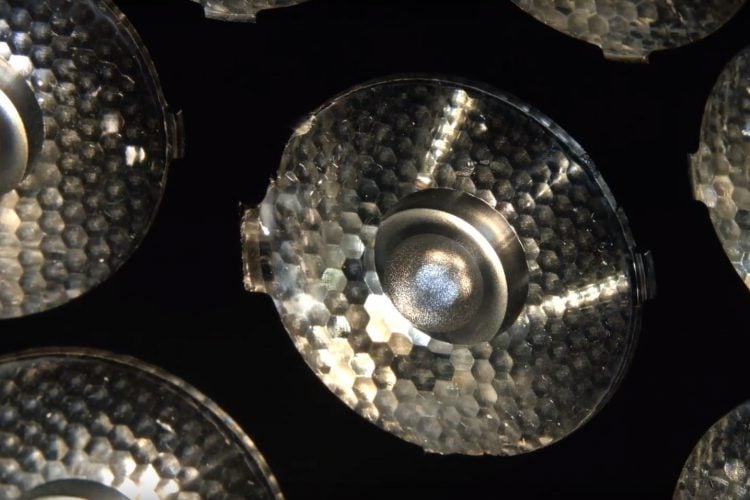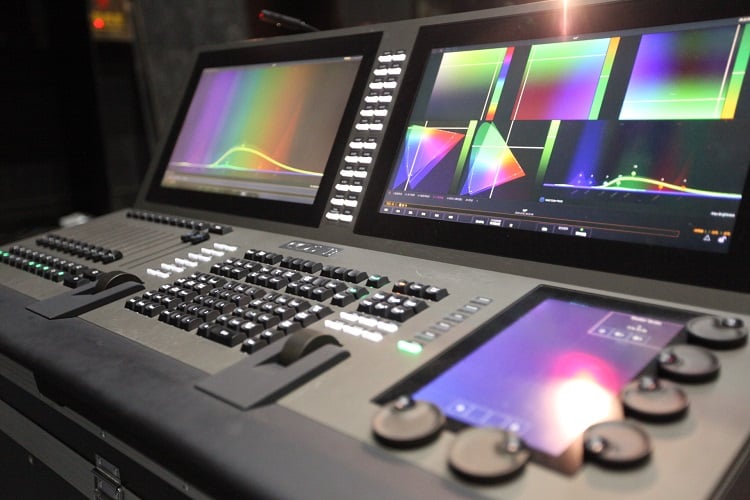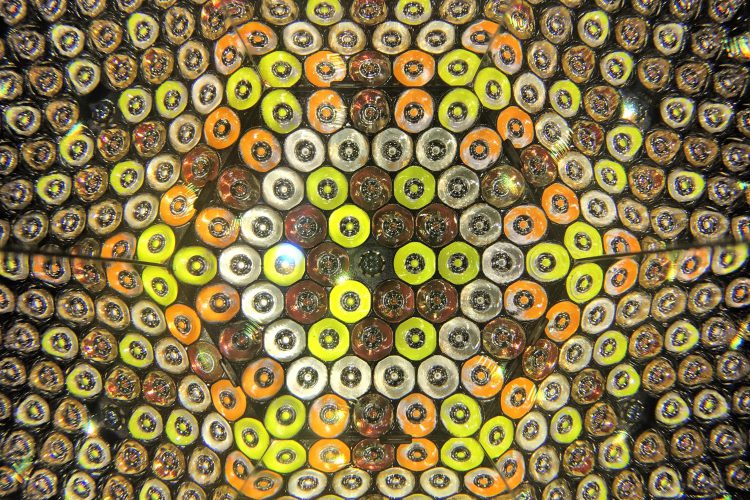In this series, we discuss some of the most frequently asked questions we receive about LEDs. Today, Color Technology Specialist Wendy Luedtke introduces color temperature and what it means in the world of LED fixtures.
In my recent chromaticity diagram post, I mentioned color temperature and CCT, or correlated color temperature. Here is a bit more explanation on color temperature:
Color temperature is a term that describes the “color” white of a particular nominally white light source. Rather than fluffy, relative, non-specific descriptors like warm, neutral or cool, color temperature provides a specific measurement, expressed in kelvin (K), to keep specifications, well… specific.
Imagine an iron fire poker. Now imagine that fire poker placed in a fire. First, the end of the poker would glow red, then orange, then yellow, then white, then blue. The same concept applies to color temperature, except instead of a fire poker we use a “theoretical blackbody.” Why theoretical? Well, because otherwise it would melt and we’d have to consider all sorts of specifics of the actual thing and how to heat it to infinity. All we care about for this application is having a standardized reference scale. Enter the glory of math.
So, as this blackbody is heating up, the electromagnetic energy it is radiating is directly linked to and changing with its temperature. While the corresponding chromaticities can be plotted on a diagram, forming the blackbody or Planckian locus, the corresponding temperature can also be tracked. The kelvin scale is used, which is an absolute thermodynamic temperature scale. (Fun fact: this scale starts with absolute zero, what scientists call “infinite cold”, at what you and I would call -273.15°C )
A kelvin (lower case) temperature is noted using the abbreviation “K” (capitalized) and should have a space between the number and the K. So, for example, 3500 K is correct. 3500°K is not correct, nor is 3500K. Now, just to complicate things, folks sometimes purposefully omit that space to prevent unfortunate line breaks in written materials and image labels. Fortunately, either way the information is clear.
Here’s a pretty graphic showing some common color temperatures and their accompanying fluffy descriptors:

Why is it that higher color temperatures, which in my fire poker example would be hotter, refer to light that appears increasingly “cool” or “cold”? Well, I suppose that’s the magic of communicating as a designer vs. as a scientist. Feelings and math are often at apparent odds. Since it’s consistent, though, as an industry, we roll with it.
Up next: more explanation on CCT.
[1] https://www.nist.gov/si-redefinition/kelvin-introduction





